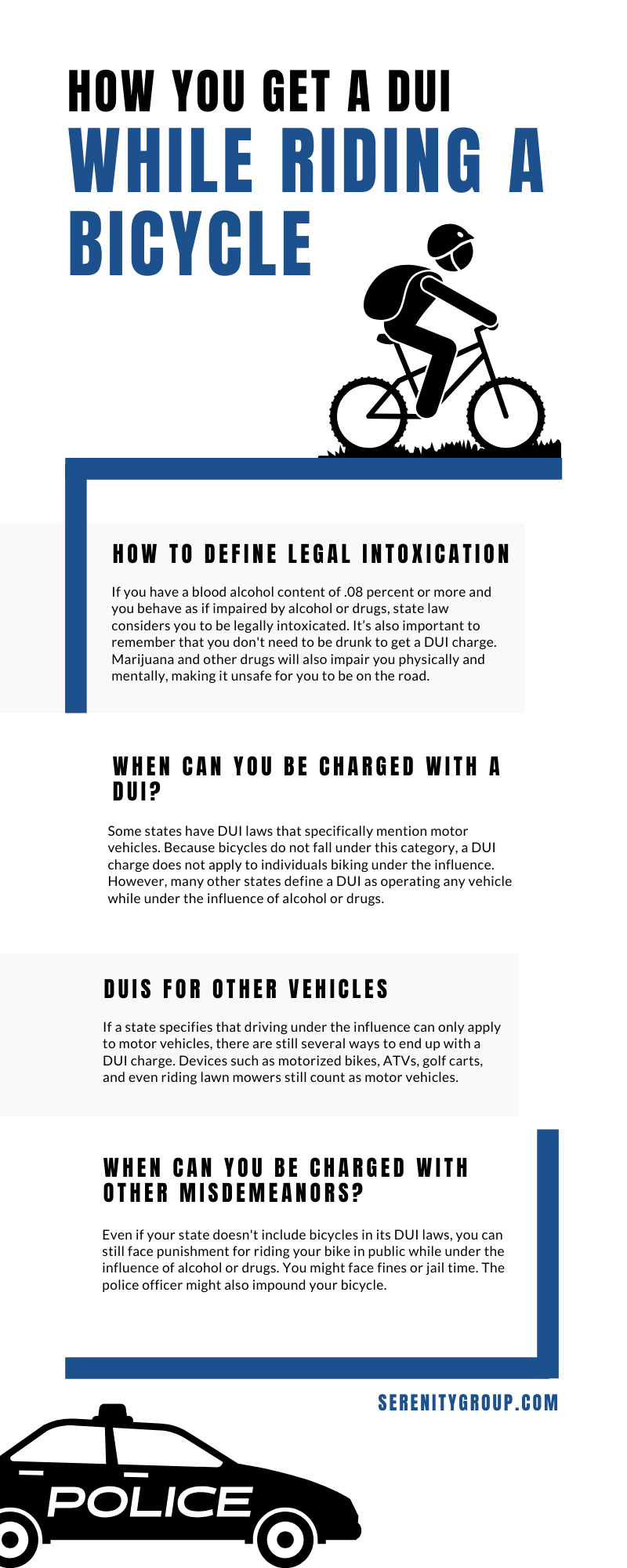Bicycling offers a refreshing alternative to traditional modes of transportation, promoting both physical health and environmental awareness. However, bicycle riders in California, as elsewhere, may find themselves entangled with the law due to misconceptions about driving under the influence (DUI) laws. Many cyclists may wonder, “Can I really get a DUI on a bicycle?” The short answer is yes, but the details and implications are worth exploring.
First, let’s clarify what constitutes a DUI in the state of California. According to California Vehicle Code Section 23152, it’s illegal to drive a vehicle while impaired by alcohol or drugs. A vehicle, under California law, can broadly encompass not just traditional motor vehicles but also bicycles. As surprising as it may seem, operating a bicycle while under the influence can lead to DUI charges, highlighting the necessity for cyclists to remain judicious about their consumption of alcohol or illicit substances before hitting the road.
Moreover, the definition of driving under the influence doesn’t hinge solely on the operator’s blood alcohol content (BAC). Cyclists can be convicted of a DUI even with a BAC below 0.08% if they are deemed incapable of safely operating the bicycle. This clause emphasizes the subjective nature of the law regarding cycling and intoxication, underscoring the necessity for responsible behavior.
In California, the penalties for a bicycle DUI can vary, though they are generally less severe than for motor vehicle DUIs. First-time offenders might face a fine, mandatory education programs, or potentially community service. However, repeat offenders can face increased fines and harsher repercussions. Importantly, a DUI on a bicycle does not affect a driver’s license since bicycles do not require one; nevertheless, the potential for legal ramifications exists.
While the penalties may be less stringent, the repercussions on one’s personal life can still be profound. Legal fees, increased insurance premiums, and employment challenges are all potential fallout. Cyclists should be acutely aware that even though they are on two wheels, they are subject to the same scrutiny as those driving four. This brings forth a plethora of questions about community perceptions and societal responses towards cycling under the influence.
The stigma surrounding DUIs, whether on a bicycle or in a vehicle, can be considerable. Community attitudes towards drunk cycling may not be as robust as they are towards impaired driving, leading to a significant gap in public awareness. This gap can come with dangerous implications, including an increased likelihood of accidents and injuries. Responsible cycling and public education campaigns are vital in mitigating these risks. Understanding the laws and adhering to them is essential for every cyclist, whether a recreational rider or a daily commuter.
It’s also worth discussing a concept known as the “California DUI Caution.” This refers to the idea that if you are found intoxicated while riding a bicycle, police officers might issue a warning rather than a citation in some instances—especially if there are no other mitigating circumstances such as reckless behavior. Yet, reliance on the leniency of law enforcement is fraught with risk, as decisions made by officers can vary widely based on individual circumstances.
Moreover, laws may differ not only in terms of enforcement but also with regard to specific municipal ordinances. Some cities may impose stricter regulations on cycling under the influence than others. For instance, municipalities like Los Angeles may have their own unique approaches to bicycle DUIs, potentially imposing harsher penalties or stricter enforcement practices. Thus, staying informed on local regulations is crucial for all cyclists.
During specific times of the year, such as summer weekends or holiday seasons, the incidence of cycling under the influence of alcohol often surges. This raises alarms about public safety. Communities often implement checkpoints or increased patrols during such periods to deter impaired cycling. It reinforces the idea that being responsible isn’t just about avoiding legal repercussions—it’s also about ensuring the well-being of oneself and others.
In regard to insurance implications, some cyclists may mistakenly assume that a bicycle DUI won’t affect their insurance rates since they are riding a non-motorized vehicle. However, many insurance providers consider such infractions when calculating premiums. If a cyclist is charged with a DUI, their insurance rates may indeed rise, impacting their financial responsibilities in unexpected ways.
Additionally, education plays a crucial role in preventing DUIs on bicycles. Many advocacy groups promote responsible cycling habits, highlighting the importance of planning ahead. Before heading out for a night of fun with friends, cyclists should consider alternatives to biking home after drinking, such as using ride services or public transportation. Ensuring that everyone makes informed decisions can help reduce the number of DUIs involving bicycles.
In conclusion, riding a bicycle under the influence in California is indeed possible, and the consequences can be as serious as those for motor vehicles. Cyclists must remain informed about the laws, local ordinances, and the broader implications of their actions. Awareness, education, and responsible behavior are key to creating a safer environment for all road users. Embracing these principles not only protects the individual cyclist but also enhances the overall safety of the community, promoting a culture of responsible cycling across the Golden State.
